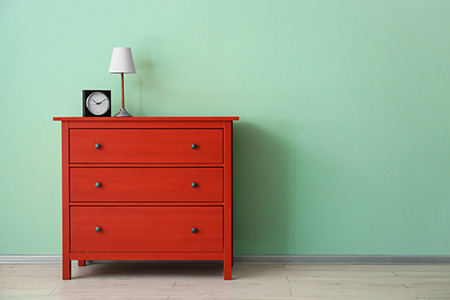 Years ago, my in-laws had a very unique coffee table in front of their sofa. It had been fashioned by their son who had worked construction, building custom homes in a resort town. When one of the homes was completed there were scraps leftover. A laminated beam made of fir was refashioned, stained black walnut, and presented as a gift to his parents.
Years ago, my in-laws had a very unique coffee table in front of their sofa. It had been fashioned by their son who had worked construction, building custom homes in a resort town. When one of the homes was completed there were scraps leftover. A laminated beam made of fir was refashioned, stained black walnut, and presented as a gift to his parents.
By the time I joined the family this solid piece of furniture, though not originally of a “distressed” style, was obviously showing signs of being well settled into the family. Fir is a soft wood, and this table had certainly received its share of use, complete with impressions and indentations made over time. Edges of the table were no longer stained and bare wood was showing, some of it had even splintered away.
Later, when our children came along, the table had even further signs of distress. Still, much to the surprise of some of my in-laws, I expected our children to treat the table well. I did not allow them to climb on it. Nor did I allow them to beat their toys against it. My wishes had to be communicated discreetly because the decisions and actions I chose for my own children were not intended to be instruction or judgement for other family members who had different views and allowed their children different behavior. A few eyebrows were raised, and comments were made even as my children’s cousins sprawled across the table coaxing and encouraging similar behaviors from my little ones.
Babies, toddlers and young children do not have a discerning eye or appreciation for different styles of furniture, much less understand their intrinsic values. But I had decided that my children would learn, by gentle guidance, how to use furniture appropriately. They would learn how to conduct themselves in all circumstances whether it was at grandma and grandpa’s house, our home, a store, a restaurant or some distinguished and posh setting. They would not have to unlearn poor habits or be embarrassed by their ignorance of good habits.
I enjoy having nice looking furniture. And since I think that children can be taught how to behave around furniture, it allows my furniture to stay looking nice for much longer than it might otherwise.
When choosing and keeping furniture, it’s important to know the needs and limitations of your family. You can have your home look nice, but you should also want your family to be comfortable in their home. What other reason would you want a home? If it’s just for a showcase, you’re in for a difficult time…first with the stuff and all the work it will be to keep it…and then with the kids, for you won’t have spent your time on keeping them.
While not allowing children to jump in the furniture, realize that according to body size their little feet, not always squeaky clean, are going to be in the chairs and sofa. For sanity sake, a white sofa would not be my first choice! A high gloss or glass coffee table, perfect for displaying finger prints or a film of dust, would not be my go-to either. I don’t want the furniture begging for my constant attention, I have better things to do. My first coffee table, with its matte finish, was fabulous for NOT showing finger prints.
A coffee table is a great place to be able to set drinks, reading material and have a decorative display. But with a young crawler, who suddenly learns to pull up and stand at the coffee table, you’ll find that nothing on the table is safe from an amazingly long armed reach.
In my opinion, having anything on the coffee table at that point, is a losing battle. Anything, that is, except plastic donuts that the toddler is chewing on and learning to stack…until they try to beat the table. Possibly harmless at first, but this will never do with other toys later, so be quick to distract and replace with a different activity.
As our family started growing, I came to realize that our coffee table was no longer able to provide its intended use. In fact, it was taking up precious space in our small living space. So, out it went. Now there was more place space…including room for somersaults and rough play with Dad.
Children can learn how to use furniture appropriately. They need to be shown what to do and where to do it. As with all learning, they will not be accomplished in this behavior as soon as they start out. So again, choose furniture that will be appropriate but be ready to accept dents and dings that come with living…especially with a young family.
I’ll never forget the time Tom and I refinished an antique rocking chair. He had sanded, stained and varnished the wood. It was a beautiful walnut color. We reupholstered that chair in our living room with young children and their toys at our feet. It really turned out beautiful.
A couple days later, weren’t we disturbed to find the arm handles had two marks, side by side, on both sides of the chair. It was as if front teeth had been scraped across them, which was exactly what had happened. The height of the markings matched up to one of our children perfectly. The child seemed genuinely surprised that we were disturbed. We talked, scolded and spoke against that behavior…but what else could we do? This act appeared to have been done in innocence. This was a first offense of that kind, and we never had another one like it…at least, not from that child.
Kids can learn to use furniture properly. Keep in mind that it’s a learning process. This also means it is a teaching process…a continued teaching process that requires expectation, patience and continuance.
Choose furniture that will help you and your children achieve success. Start the teaching process as early as possible and in your own home. Don’t wait until you are out somewhere, that’s not the time to start teaching, instead it should be only a time of gentle reminder.
Teach them well, and later, the coffee table may return.


